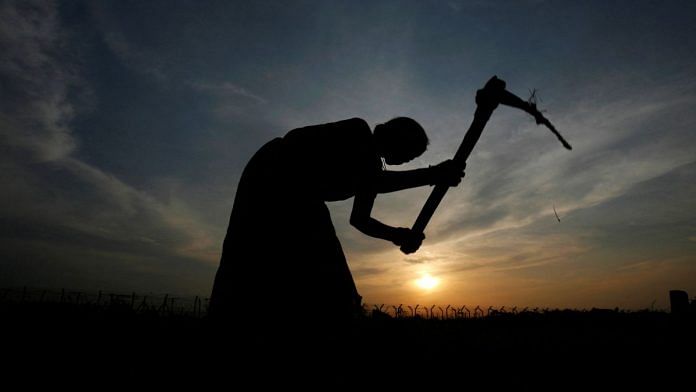Being the last full budget before the 2024 Lok Sabha election, expectations from Budget 2023, which Finance Minister Nirmala Sitharaman presented Wednesday, were rife. It was believed, for instance, that the amount given to farmers under the PM-KISAN scheme would be increased. While some expectations were successfully met, there were some disappointments too. Here’s a quick look.
Some hits
Making unicorns out of women-led FPOs and SHGs: About 75% of women workers in India are employed in the country’s agrarian sector (PLFS 2020-21). Organising rural women into self-help groups and finding ways to scale-up their operations and helping them sustain professionally is a welcome and much-needed move.
Creation of a digital public infrastructure for agriculture: An open source and interoperable public good is rightly geared to leverage the expansive data that can be used by the government to improve policy formulation and implementation.
Focus on agri-entrepreneurs: India is emerging to be the entrepreneurial hub of the world. Through a fund dedicated to start-ups in rural India, Sitharaman accorded right thrust on the value-chain approach in the agriculture sector. She suggested that start-ups focus on ensuring high-quality production and also delivering higher profitability to farmers.
None of the crops other than cotton found a specific mention in the Budget 2023 speech. Cotton inflation last calendar year has been in double-digits and the crop yields have been under a perennial threat from pests. Sitharaman offered to create cotton clusters and invited closer partnership between farmers, seed suppliers, extension agents, and traders.
Millets were earlier christened as nutri-cereals in 2018-19 and from this Budget onwards, will now be called Shree Anna. 2023 has been earmarked as the International Year of Millets. By providing support for research and development of Shree Anna, Sitharaman highlighted the need to improve their crop yields and quality.
Ethanol from crops: India’s Oil Marketing Companies (OMCs) need ethanol to meet the fuel-blending targets and the pharmaceutical industries need it for creating sanitisers, disinfectants, etc. While the fuel-blending requirements are to be met through indigenously produced ethanol (from crops or its by-products), the industrial needs are met through combination of domestic supplies and imports, largely from the US. Budget 2023 reduced the 5% duty on imported denatured ethanol. A policy move in one sweep improves domestic availability for industries as well as the availability of indigenously produced ethanol for meeting the E20 fuel-blending targets by 2025-26.
Also read: Ethanol blending crucial to cut oil imports but doubling it will hurt India’s food security
Some misses
The allocation for the Ministry of Agriculture and Farmers Welfare (MoAFW) is lower in Budget 2023. It was unexpected given the impact of climate change and high food inflation was so intense last year. Compared to last year’s (budgeted) amount, this year’s budget for the agriculture ministry is lower by about Rs 7,500 crore, with the share falling from 3.4% to about 2.8% in the country’s total budget.
Climate change and mitigation: Amid talks about the developing El Nino in the Pacific Ocean and its likely adverse impact on our upcoming monsoons, and the adverse impacts of high temperatures and volatile monsoons on the country’s staple crops last year led one to expect improved allocations on climate resilience and mitigation efforts. Alas, no such signals appeared in Budget 2023. Rashtriya Krishi Vikas Yojana (RKVY), which subsumed this climate-related budget head, in fact has a lower amount allocated to it than last year. The earlier-mentioned “Climate change Action Plan” is now missing a dedicated budgetary allocation.
Irrigation: As per the latest data available with the Directorate of Economics and Statistics (DES), about 52% of the country’s gross cropped area is under assured irrigation. The remaining area depends on monsoon rains for irrigating crops. The budget for PM Krishi Sinchayee Yojana (PMKSY) scheme – the flagship irrigation scheme that included Har Khet Ko Pani and Accelerated Irrigation Benefit Programme (AIBP) under which projects were implemented to renovate and restore water bodies, provide surface minor irrigation, and other water management expenditures – has been reduced this year to about Rs 8,600 crore from Rs 10,950 crore budgeted last year.
MGNREGA: The allocation under the Mahatma Gandhi National Rural Employment Guarantee Act (MGNREGA) has been reduced from last year’s Rs 73,000 crore (actual spend was Rs 89,400 crore) to Rs 60,000 crore for the coming year. When compared to the actual spend in 2022-23, the next year’s MGNREGA allocation is lower by about 33%. This is a critical employment guarantee scheme for Indian workers. It provides assurance of minimum livelihood to families in rural areas.
Operation Greens: Extreme production and price volatility in India’s TOP crops (tomato, onion and potato) led to the announcement of Operation Greens in 2018-19. The scheme had an outlay of Rs 500 crore. By 2020, the scope of this scheme was expanded to include all fruits and vegetables. For 2023-24, the outlay of this scheme has been reduced by more than 50% to Rs 214 core. India continues to grapple with high double-digit inflations in most of these horticulture crops, mainly TOP.
Some critical aspects like climate resilience plans, crop diversification plans (particularly to move away from wheat and paddy), and plans for mainstreaming of tenant farmers continue to stay outside the next year’s budgetary support too, just like previous years.
Shweta Saini is an agricultural economist and co-founder of Arcus Policy Research. Views are personal.
(Edited by Prashant)






